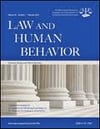
Good evidence was found for the construct validity of the MMPI-2-RF in a sample of Lithuanian offenders, with scale scores differentiating between various offender groups in a manner consistent with conceptual expectations. This is the bottom line of a recently published article in Law and Behavior. Below is a summary of the research and findings as well as a translation of this research into practice.

Featured Article | Law and Human Behavior | 2017, Vol. 41, No. 5, 494-505
Utility of the MMPI-2 Restructured Form (MMPI-2-RF) in a Sample of Lithuanian Male Offenders
Authors
Ilona Laurinaitytė, Vilnius University, Vilnius, Lithuania
Alfredas Laurinavičius, Vilnius University, Vilnius, Lithuania
Laura Ustinavičiūtė, Vilnius University, Vilnius, Lithuania
Dustin B. Wygant, Eastern Kentucky University, Kentucky, United States
Martin Sellbom, University of Otago, Dunedin, New Zealand
Abstract
The aim of the current study was to examine the construct validity of the Multiphasic Personality Inventory-2 Restructured Form (Minnesota Multiphasic Personality Inventory [MMPI]-2-RF; Ben-Porath & Tellegen, 2008/2011) in a correctional setting. More specifically, we examined the associations between MMPI-2-RF scales with external variables relevant for sentence planning as well as the relationship with risk of reconviction assessed with the Offender Assessment System (OASys; Home Office, 2002). A random sample of 228 male offenders from Lithuanian custodial institutions was selected for the study. The results revealed that MMPI-2-RF scale scores differentiated offender groups classified on the basis of external variables, such as history of suicide attempts, violent offending, use of drugs, violence under the influence of alcohol, and early criminal onset, in a manner consistent with conceptual expectations. Moreover, Behavior/Externalizing Dysfunction (BXD), Antisocial Behavior (RC4), Juvenile Conduct Problems (JCP), Substance Abuse (SUB), and Disconstraint-Revised (DISC-r) scale scores evinced correlations with OASys scores that were moderate in magnitude. Results from regression analyses showed that MMPI-2-RF scale scores accounted for approximately 21% of variance of OASys risk of reconviction scores. Overall, the findings provide support for the utility of the MMPI-2-RF in Lithuanian correctional institutions.
Keywords
MMPI-2-RF, OASys, offender assessment, risk of reconviction
Summary of the Research
“The current research was designed to evaluate the construct validity and utility of the most recent version of the Minnesota Multiphasic Personality Inventory (MMPI), the MMPI-2 Restructured Form (MMPI-2-RF), which is one of the most common assessment tools in forensic and correctional psychological practice internationally,” and “research has found that the MMPI-2-RF effectively assesses various forms of internalizing, externalizing psychopathology, and personality disorder symptoms” (pp. 494-495).
“[T]he current study focused on the validity and utility of the MMPI-2-RF in assessing a range of important variables … External variables selected for analysis were: (a) history of self-harm, attempted suicide, suicidal thoughts or feelings; (b) history of committing a violent crime; (c) history of drug misuse; (d) violent behavior related to alcohol use at any time; and (e) first conviction at any court prior to age 18. Information related to external variables was present in OASys assessment forms” (pp. 495, 498).
“The goals of the current study … were to elaborate on the construct validity and utility of the MMPI-2-RF in a sample of incarcerated Lithuanian offenders. First, [researchers] investigated the utility of the MMPI-2-RF to differentiate groups of offenders on the basis of various external variables … A second goal of the current study was to examine the concurrent associations between MMPI-2-RF scales and a measure assessing risk of reconviction, the Offender Assessment System (OASys), which was deemed important as risk of reconviction evaluations are routinely conducted in Lithuanian correctional institutions. More specifically, the aim was to identify MMPI-2-RF scales that uniquely contributed to the prediction of OASys scores, and to determine the proportion of variation of risk of reconviction scores that could be accounted for by variation in MMPI-2-RF scale scores” (p. 496).
“MMPI-2-RF scale scores accounted for up to 21.1% of the variance in OASys risk of reconviction scores … [These] findings provided good support for construct validity, including in association with actuarial risk of reconviction scores, and indicate that this omnibus personality measure can be used in Lithuania to formulate important clinical impressions of incarcerated male offenders” (p. 499).
Translating Research into Practice
“[A] number of the MMPI-2-RF scales evaluate different aspects of behavioral dysfunction and problems of undercontrolled behavior, which should be related to risk of reconviction. For this reason, the results from MMPI-2-RF assessments can potentially provide valuable prognostic information … MMPI-2-RF results can provide valuable information for final risk judgment in these types of violence risk measures” (p. 496).
“[T]he OASys provides an indication of actuarial static risk, whereas most MMPI-2-RF scales reflect constructs that are more dynamic in nature. Many risk assessment tools rely on both sets of factors and the MMPI-2-RF provides for objective assessment of psychopathology (e.g., psychosis, depression) and maladaptive personality traits (e.g., emotional instability, impulsivity) to inform (corroborated by other information sources) risk ratings on the dynamic factors within such tools” (p. 502).
“[R]esults confirmed the utility of this scale as well as that of other behavioral dysfunction in differentiating offenders with early versus late onset to criminal conduct. These findings are important as early criminal onset is one of the most influential factors predicting future criminal behavior, and it is routinely used as an independent variable in multivariate models relating to problem behaviors and delinquency over the life course” (p. 501).
“[C]orrectional psychologists can benefit from MMPI-2-RF scale scores to generate information regarding substance abuse problems, anger, antisociality, and violence. Assessment of criminal offenders is important in several respects, such as to manage risk of self-harm in offenders, aggression to other offenders, to evaluate the risk of reconviction, and to provide appropriate treatment to match offenders’ needs” (p. 502).
“[T]he MMPI-2-RF can be useful in identifying offender characteristics associated with potential suicide risk … Moreover, suicidal offenders were also characterized as having more problems in emotional and behavioral domains. The observed differences confirm theoretical assumptions that those who attempt suicide are characterized as having more expressed emotional dysfunction” (pp. 499-500).
“The results indicate that offenders with a history of drug use are more antisocial, have more problems of undercontrolled behavior, are more aggressive, extroverted, assertive, and their behavioral problems start earlier … However, MMPI-2-RF scales from the behavioral dysfunction domain did not differentiate offenders who engaged in violent behavior under the influence of alcohol from those who did not. Rather, these offenders had higher scores on a number of emotional, somatic, and thought dysfunction scales” (p. 501).
“[B]ehavioral problems should be taken into consideration when formulating risk, particularly if these findings are cross-validated in a prospective design. Emotional and cognitive dysfunction problems have also appeared to be related to risk of reconviction scores. Higher riskof reconviction scores were related to higher levels of general unhappiness and dissatisfaction, inefficacy, suicidal thoughts, and complaints about cognitive problems … indicating that higher risk of reconviction is related to higher levels of psychopathology” (p. 501).
Other Interesting Tidbits for Researchers and Clinicians
“Existing research on the validation of sex offender risk-assessment tools has often relied a single metric—namely, the AUC. As we noted earlier, the AUC has its strengths, but it also has some weaknesses. We suggest that future validation research begin using alternative measures of predictive discrimination such as Hand’s (2009) H measure and the precision-recall curve. But given that predictive discrimination addresses only one dimension of predictive validity, metrics that assess accuracy and calibration should also be used to provide a more comprehensive evaluation of predictive performance. As this study illustrates, accuracy metrics are informative for imbalanced data sets so long as there are at least some predicted positives in the data set. Moreover, if researchers and practitioners must rely on a single metric, we suggest that either the SAR or SHARP statistics would be preferable because both tap into multiple dimensions of predictive validity.” (p. 277)
“The AUC values for both the Static-99R and MnSOST-3.1 were lower in comparison to what most of the existing research has reported for either instrument. Much of this research, as we indicated earlier, has consisted of assessments that were scored for research purposes. In this study, we used assessments that had been scored by correctional staff for operational purposes, which provide what is arguably a truer test of predictive performance. Compared to field assessments, those administered strictly for the sake of research may yield overly optimistic estimates of predictive performance due to more favorable conditions in which raters are likely to have had more recent, thorough training. To provide a more realistic estimate of how sex offender risk-assessment tools perform in practice, future research should begin relying more on assessments performed by field staff. In addition, the results suggest that caution may be warranted in using an instrument whose predictive performance has yet to be evaluated on real-world assessments” (p. 277)
“Due to several limitations, however, these findings should be regarded as somewhat preliminary. First, because our study was confined to sex offenders from a single jurisdiction, it is unclear the extent to which the findings are generalizable. Second, the sample we used was relatively small (N = 650), and it was limited to releases over one calendar year. Third, similar to the case in prior research, the better findings for the MnSOST-3 may reflect an “allegiance effect” in which its scoring and use by MnDOC staff has been more consistent with its design in comparison to the Static-99R.” (p. 276)
Join the Discussion
As always, please join the discussion below if you have thoughts or comments to add!























